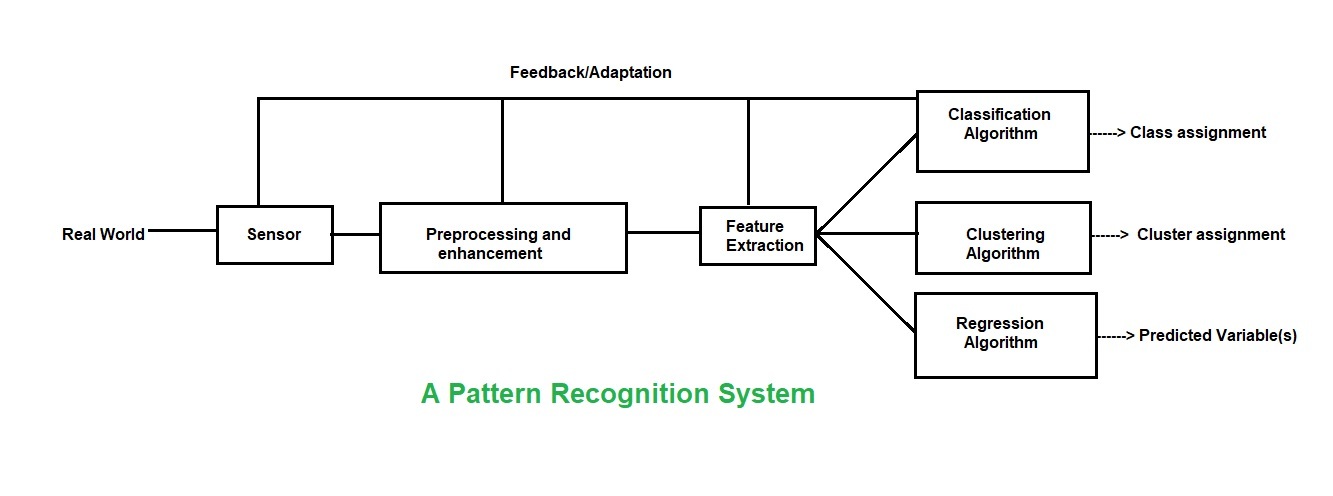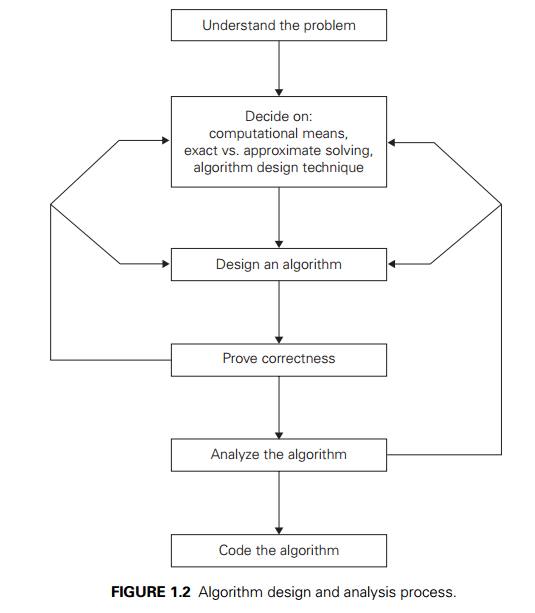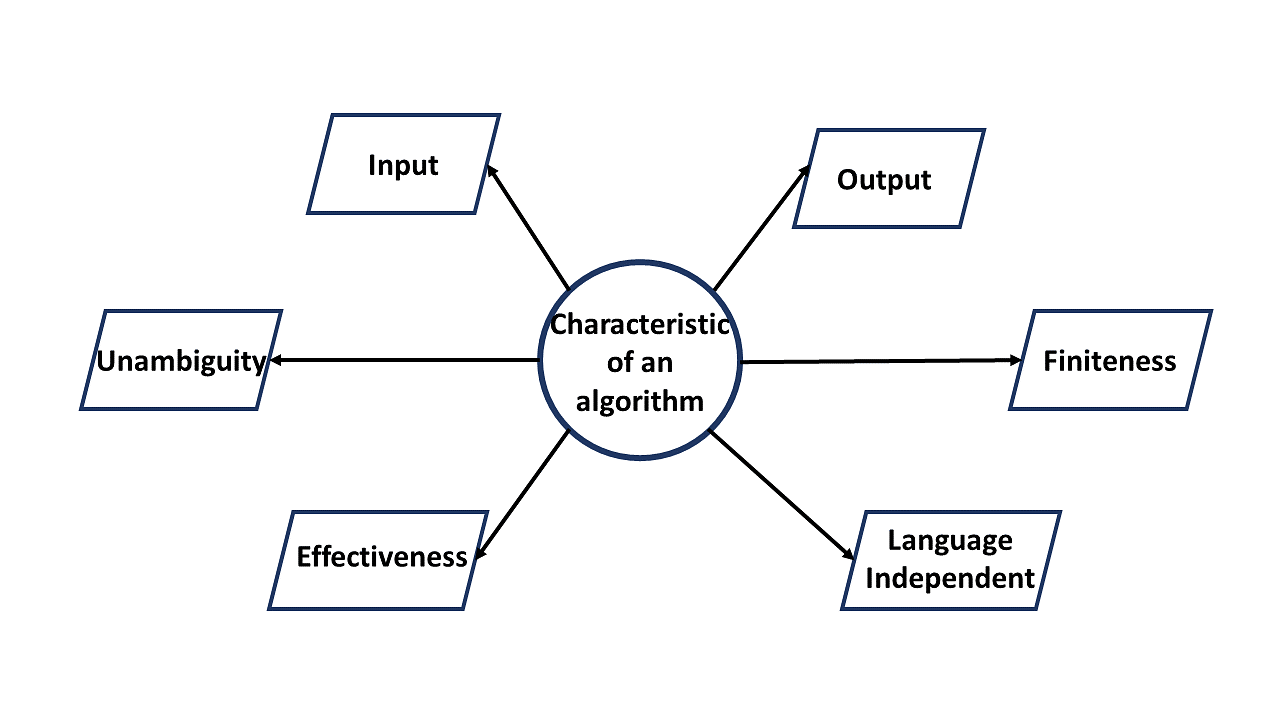Explain Different Approaches to Design an Algorithm
A sorted list L1 containing those integers present in L Step 1. This is also called an Exhaustive search algorithm.

Cracking The Coding Interview Interview Questions Interview Hacking Books
This algorithm discovered by Floyd clearly runs in time O n3 Thus O n steps are used to compute each of the n2 matrix entries.

. The distributional approach gives complete information which can be used directly to compute the standard deviation and other moments. An algorithm shows you every step of reaching the final solution while a flowchart shows you how to carry out the process by connecting each step. Indirect often simpler methods are also available for computing moments when using the other approach as we will see.
Sorting algorithms come in various flavors depending on your necessity. Keep a sorted list L1 which starts off empty Step 2. Parallel Algorithm Models Data parallel Each task performs similar operations on different data Typically statically map tasks to processes Task graph Use task dependency graph to promote locality or reduce interactions Master-slave One or more master processes generating tasks Allocate tasks to slave processes.
The algorithm must be simple generic and practical such that it can be executed upon with the available resources. A list L of integers of length n Output. The greedy method is a powerful technique used in the design of algorithms.
It is the general and the simplest way to design an algorithm. An algorithm design technique or strategy or paradigm is a general approach to solving problems algorithmically that is applicable to a. The algorithm must be finite ie.
An algorithm uses mainly words to describe the steps while you can create a flowchart with flowchart symbols to make the process more logical. Related Articles 3 Types of Flowcharts. An algorithm analysis is a technique thats used to measure the performance of the algorithms.
In the greedy method at each step a decision is made to choose the local optimum without thinking. Keep refining the process. Compare and contrast the 5 algorithm design approaches divide and conquer dynamic programming greedy approach backtracking and branch and bound and must explain each algorithm design what kind of problems are best suited to that approach do not just list them - explain and how that approach is similar andor different from the others and why you would.
This tutorial introduces the fundamental concepts of Designing Strategies Complexity analysis of Algorithms followed by problems on Graph. Learn about the design and examples of computer algorithms alternative approaches to. It should not end up in an infinite loops or similar.
Design and Analysis of Algorithm is very important for designing algorithm to solve different types of problems in the branch of computer science and information technology. Brute-force or exhaustive search Divide and Conquer Greedy Algorithms Dynamic Programming Branch and Bound Algorithm Randomized Algorithm Backtracking. Insert it into the correct position in the sorted list L1.
In the top-down approach the complex module is divided into submodules. Report describes different designing algorithms such as Brute force Greedy Divide and Conquer Dynamic programming Backtracking Branch and Bound and many more. The approach of Dynamic.
The algorithms are designed using two approaches that are the top-down and bottom-up approach. A few of these are. Here are the steps for designing an algorithm.
A computer algorithm is a procedure or instructions input into a computer that enable it to solve a problem. The algorithm must clearly define what output will be yielded and it should be well-defined as well. Perform Step 3 for each element in the original list L Step 3.
Speed is one of the key parameters in determining the potential of an algorithm. On the other hand bottom-up approach begins with elementary modules and then combine them further. There are some other.
The Divide and Conquer strategy involves dividing the problem into sub-problem recursively solving. Choose one of these three and explain briefly its main advantages for speeding up algorithms. An Algorithm is a sequence of steps to solve a problem.
The prior purpose of an algorithm is to operate the data comprised in the data structure. Play around with the problem on paper until you can solve it intuitively the majority of the time. A greedy algorithm is an algorithm that follows the problem solving met heuristic of making the locally optimal choice each stage with the hope of finding the global optimum.
There are many standard approaches to design an algorithm based on different strategies. Since the algorithms today have to operate on large data inputs it is essential for our algorithms to have a reasonably fast running time. Some very common and widely used are.
It must not contain. Machine Learning algorithms are the programs that can learn the hidden patterns from the data predict the output and improve the performance from experiences on their own. Divide and conquer approach.
We will be using general tools that make this approach very attractive. Greedy Algorithms This is another approach that is often used to design algorithms for solving Optimisation Problems In contrast to dynamic programming however. Return the sorted list Step 5.
Keep refining your process noting the key steps until you can solve it 100 of the time andor identify cases where no. Almost all problems that come under this category have n inputs. It simply involves a direct logic-based structure to design an algorithm.
Following are some of the main algorithm design techniques. This shows how the running time of the algorithm grows as the input size grows. Different algorithms can be used in machine learning for different tasks such as simple linear regression that can be used for prediction problem s like stock market.
We learned 3 different approaches that sometimes speed up algorithms.

Figure 2 From When Deep Learning Meets Data Alignment A Review On Deep Registration Networks Drns Semantic Scho Deep Learning Learning Techniques Learning

The Perfect Assessment Process Powerpoint Template Business Infographic Powerpoint Infographic Templates

Why Students Should Create With Ai Tools Learning Design Define Research Computer Algorithm

Anythink Creativity Cards Critical Design Thinking Creative Cards

Excellent Webapp Chrome Extension To Summarize Web Pgs Web App Summarize Algorithm

Pattern Recognition Basics And Design Principles Geeksforgeeks

Fundamentals Of Algorithmic Problem Solving

Scholarly Articles For Unbreakable Password Algorithm Using Chaos Theory In Quantum Computing Quantum Entanglement Quantum Leap Quantum Computer

Daa Divide And Conquer Introduction Javatpoint

How Artificial Intelligence Will Bring The Human Touch Back To Hotels Avvio The Premium Book Artificial Intelligence Information Visualization Intelligence

Is Machine Learning Really Ai Part 2 Deep Learning Machine Learning Ai Machine Learning

Elements Of Software Testing 2015 Software Testing Software Development Programing Software

Data Aggregation Power Point Template Presentation Design Template Powerpoint Presentation

Merge Sort And It S Time Complexity In 2021 Time Complexity Computer Science Sorting

From Topology Optimization Design To Additive Manufacturing Today S Success And Tomorrow S Roadmap Archives Of Computational Methods In Engineering Mechanical Engineering Design Mechanical Design Generative Design

Challenges In Computational Biology Computational Biology Biology Algorithm

What Is An Algorithm Characteristics Types And How To Write It Simplilearn

Recommender Approaches Recommendation Algorithms Recommender System Collaborative Filtering Algorithm

Comments
Post a Comment